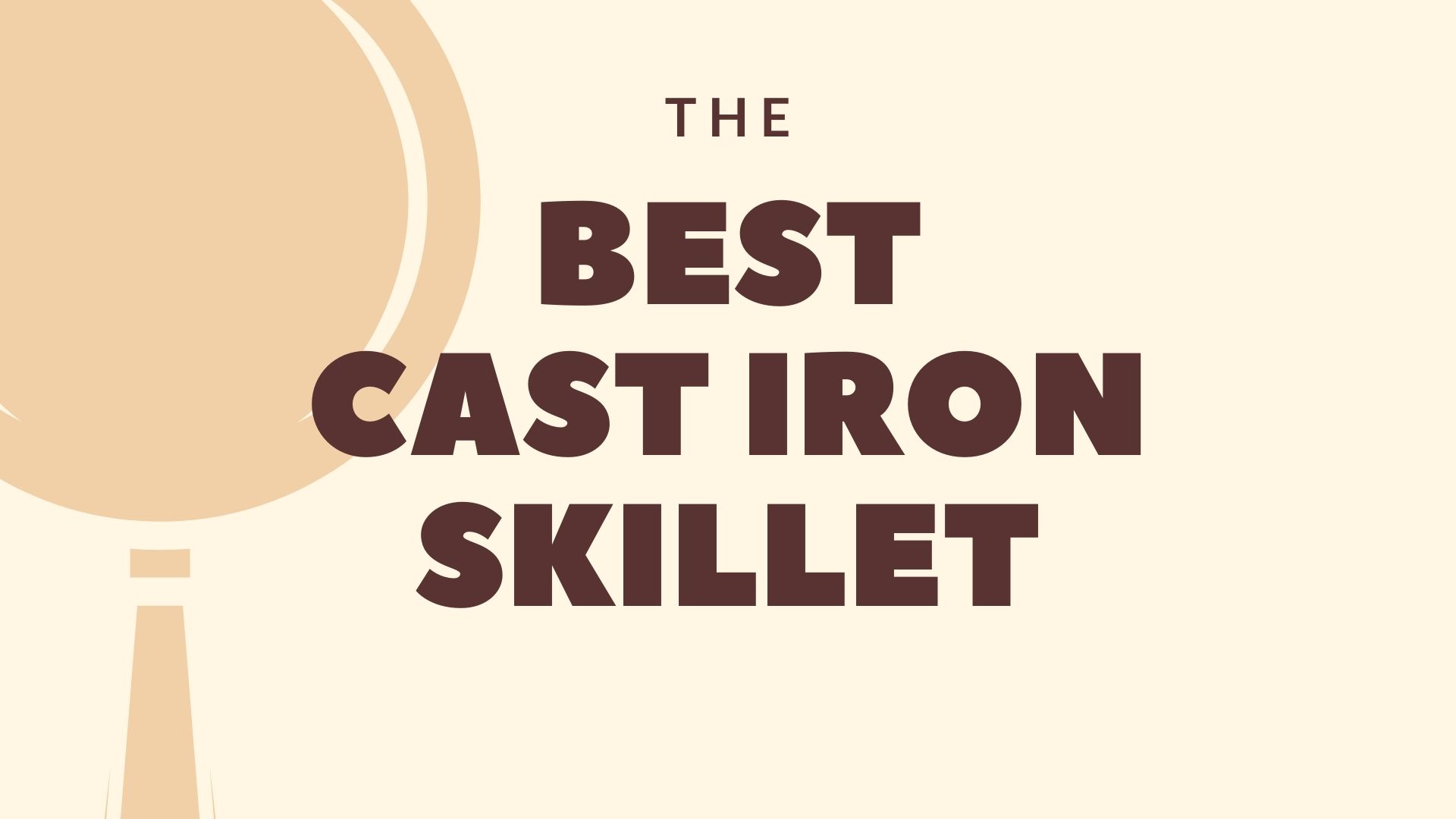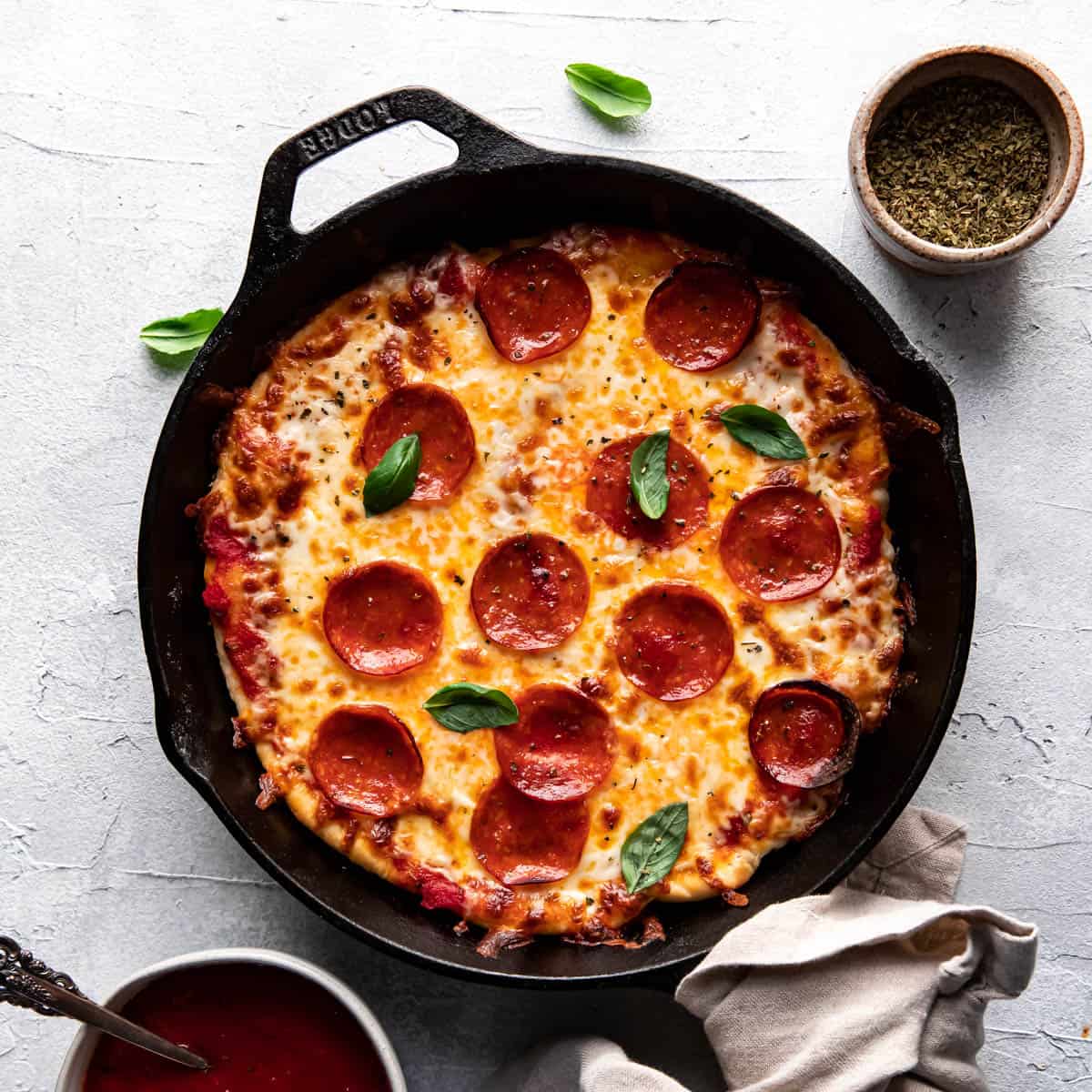The Ultimate Guide To Choosing The Best Cast Iron Skillet For Your Kitchen
When it comes to timeless kitchen tools, the best cast iron skillet stands out as a true culinary workhorse. Whether you're searing steak, baking cornbread, or preparing a hearty stew, a cast iron skillet can handle it all with unmatched versatility and durability. This article delves into everything you need to know about selecting and maintaining this essential cookware, ensuring that your investment lasts for generations.
Cast iron skillets have been a staple in kitchens for centuries, and for good reason. They offer unparalleled heat retention, even cooking, and the ability to go from stovetop to oven seamlessly. However, not all cast iron skillets are created equal. With a plethora of options available on the market, choosing the best one for your needs can be overwhelming. From seasoned classics to enameled innovations, understanding the differences is key to making the right choice.
In this comprehensive guide, we’ll walk you through the factors to consider when shopping for the best cast iron skillet, including size, weight, handle design, and seasoning. We’ll also explore tips for maintaining your skillet, the top brands to consider, and answers to frequently asked questions. By the end, you’ll be equipped with the knowledge to make an informed decision and elevate your cooking game with this timeless piece of cookware.
- Maxwell Air Force Base Visitor Center Your Gateway To History And Heritage
- Deux Bistro A Culinary Haven For Food Lovers
Table of Contents
- Why Choose Cast Iron Skillets?
- What Should You Look for in a Cast Iron Skillet?
- Top Brands for the Best Cast Iron Skillets
- How to Maintain Your Cast Iron Skillet
- Can You Ruin a Cast Iron Skillet?
- How Does Cast Iron Compare to Other Cookware?
- Choosing the Right Size: What Works for You?
- Is Enamel-Coated Cast Iron Worth It?
- Recipes You Can Make with a Cast Iron Skillet
- Frequently Asked Questions (FAQs)
- Conclusion
Why Choose Cast Iron Skillets?
Cast iron skillets have earned their place in the culinary world due to their durability, versatility, and timeless appeal. Unlike other cookware, they improve with age, developing a natural non-stick surface over time. But what truly sets them apart? Let’s explore.
- Heat Retention and Distribution: Cast iron skillets are excellent at holding and evenly distributing heat. This makes them perfect for tasks like frying, searing, and baking.
- Longevity: A well-maintained cast iron skillet can last for decades, if not generations, making it a sustainable and cost-effective choice.
- Versatility: From stovetop to oven to campfire, cast iron skillets can handle a wide range of cooking methods.
Beyond these practical benefits, cast iron skillets also carry a sense of tradition and nostalgia. They’re the kind of cookware that gets passed down through families, bearing the marks of countless meals and memories.
What Should You Look for in a Cast Iron Skillet?
Choosing the best cast iron skillet isn’t just about picking the first one you see on a store shelf. There are several factors to consider to ensure you’re getting a skillet that suits your cooking needs and preferences.
- Rj Grunts Cheesy Chicken A Delicious Culinary Creation Worth Savoring
- Freck Beauty Redefining Skincare And Makeup For A Modern World
Size and Weight
Cast iron skillets come in a range of sizes, typically measured in inches across the top diameter. Here’s how to determine the right size for you:
- Small (6-8 inches): Ideal for single servings or side dishes.
- Medium (9-12 inches): Perfect for most households, offering enough space for cooking meals for 2-4 people.
- Large (13+ inches): Best for big families or batch cooking, but note that these can be quite heavy.
Weight is another consideration. While heavier skillets retain heat better, they can be challenging to handle, especially for those with limited strength or mobility. Strike a balance between weight and usability that works for you.
Handle Design and Grip
Since cast iron skillets are heavy, the handle design plays a significant role in usability. Look for skillets with:
- Ergonomic Handles: These provide a comfortable grip, reducing strain on your hands.
- Helper Handles: A smaller secondary handle on the opposite side helps with lifting and maneuvering the skillet.
Additionally, consider investing in a heat-resistant handle cover or silicone grip to make handling hot skillets safer and more convenient.
Pre-Seasoned vs. Unseasoned: Which Is Better?
Most modern cast iron skillets come pre-seasoned, meaning they’re coated with a layer of oil that’s been baked into the surface. This provides some non-stick properties right out of the box. However, unseasoned skillets offer the opportunity to build a seasoning layer from scratch, which some purists prefer. Here’s a quick comparison:
| Feature | Pre-Seasoned | Unseasoned |
|---|---|---|
| Convenience | Ready to use immediately | Requires initial seasoning |
| Customization | Limited seasoning options | Full control over seasoning process |
| Price | Slightly more expensive | Often more affordable |
Ultimately, the choice comes down to personal preference and how much effort you’re willing to invest in preparing your skillet for use.
Top Brands for the Best Cast Iron Skillets
When it comes to selecting a cast iron skillet, brand reputation matters. Here are some of the most trusted names in the industry:
- Lodge: A household name in cast iron cookware, known for its affordability and quality. Lodge skillets are made in the USA and come pre-seasoned for convenience.
- Le Creuset: Famous for its enameled cast iron skillets, Le Creuset combines functionality with aesthetic appeal. While pricey, their products are built to last.
- Field Company: Specializing in lightweight cast iron skillets, Field Company offers a modern take on a classic design.
- Staub: Another premium brand, Staub is known for its enameled cast iron skillets that require no additional seasoning.
Each brand has its strengths, so consider your budget, cooking style, and aesthetic preferences when making a decision.
How to Maintain Your Cast Iron Skillet
Proper maintenance is essential to preserving the performance and longevity of your cast iron skillet. Here’s how to keep it in top shape:
Cleaning Your Skillet
Contrary to popular belief, cleaning a cast iron skillet doesn’t have to be complicated. Here are some tips:
- Avoid Soap: While a small amount of mild soap is okay occasionally, avoid using harsh detergents that can strip the seasoning.
- Use Hot Water: Rinse your skillet with hot water immediately after use to prevent food from sticking.
- Scrub Gently: Use a stiff brush or a scraper to remove stubborn residue without damaging the seasoning.
Once clean, dry the skillet thoroughly to prevent rust. You can place it on a low flame for a few minutes to ensure it's completely moisture-free.
Seasoning Your Cast Iron
Seasoning is the process of baking oil into the skillet’s surface to create a natural non-stick coating. Here’s how to do it:
- Clean the skillet and ensure it’s completely dry.
- Apply a thin, even layer of vegetable oil or flaxseed oil to the entire surface, including the exterior and handle.
- Place the skillet upside down in an oven preheated to 375°F (190°C).
- Bake for 1 hour, then turn off the oven and let the skillet cool inside.
Repeat this process periodically or whenever you notice the skillet’s surface becoming dull or uneven.
Can You Ruin a Cast Iron Skillet?
While cast iron skillets are incredibly durable, they’re not indestructible. Common mistakes include:
- Neglecting to Dry: Leaving water on the skillet can lead to rust.
- Overheating: Excessive heat can damage the seasoning and warp the skillet.
- Using Abrasive Cleaners: Steel wool and harsh chemicals can strip the seasoning.
Fortunately, most issues can be fixed with a little TLC. Rust, for example, can be removed with a vinegar soak and re-seasoning.
How Does Cast Iron Compare to Other Cookware?
Compared to stainless steel, non-stick, and aluminum cookware, cast iron has unique advantages and disadvantages. Here’s a quick breakdown:
- Heat Retention: Cast iron excels at retaining heat, making it ideal for high-temperature cooking.
- Durability: Unlike non-stick pans, cast iron skillets can last a lifetime with proper care.
- Weight: Cast iron is heavier than other materials, which can be a drawback for some users.
In conclusion, while cast iron may require a bit more effort to maintain, its benefits far outweigh the drawbacks for many home cooks.
Choosing the Right Size: What Works for You?
When selecting the best cast iron skillet, size is an important consideration. A large skillet might be perfect for family meals, while a smaller one is better suited for individual servings. Think about what you’ll be cooking most often and choose accordingly.
Is Enamel-Coated Cast Iron Worth It?
Enamel-coated cast iron skillets offer the same benefits as traditional cast iron but with added convenience. They don’t require seasoning and are easier to clean. However, they’re also more expensive and can chip if mishandled. Weigh the pros and cons to decide if it’s the right choice for you.
Recipes You Can Make with a Cast Iron Skillet
From breakfast to dessert, the possibilities are endless. Here are some ideas:
- Breakfast: Frittatas, pancakes, or hash browns.
- Lunch/Dinner: Seared steaks, roasted chicken, or skillet lasagna.
- Dessert: Skillet cookies, cobblers, or upside-down cakes.
Frequently Asked Questions (FAQs)
1. Do I need to season a pre-seasoned skillet?
While pre-seasoned skillets are ready to use, additional seasoning can improve their non-stick properties over time.
2. Can I use soap to clean my cast iron skillet?
Yes, but sparingly. Mild soap won’t harm a well-seasoned skillet, but avoid harsh detergents.
3. Why is my cast iron skillet sticky after seasoning?
This usually happens if too much oil was applied during the seasoning process. Use less oil and bake longer next time.
4. Can I cook acidic foods in my cast iron skillet?
Yes, although prolonged cooking of acidic foods like tomatoes can strip the seasoning. Re-season as needed.
5. Is cast iron safe for induction cooktops?
Absolutely! Cast iron works well on induction cooktops due to its magnetic properties.
6. How do I store my cast iron skillet?
Store your skillet in a dry place, and consider placing a paper towel between stacked skillets to prevent scratching.
Conclusion
Investing in the best cast iron skillet is a decision you won’t regret. With proper care and maintenance, this versatile piece of cookware will serve you well for years to come, becoming an indispensable part of your kitchen arsenal. Whether you’re a seasoned chef or a home cook, a cast iron skillet is a tool worth having in your culinary toolkit.
- Everything You Need To Know About Nyu Campus Store A Comprehensive Guide
- The Twilight Zone Movie Accident A Tragic Event That Changed Hollywood

The Best Cast Iron Skillet

The Best Cast Iron Skillet Pizza (30 Minute) Modern Crumb